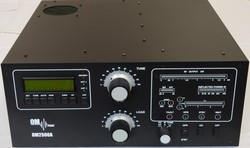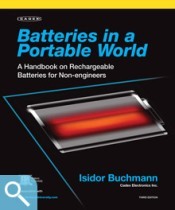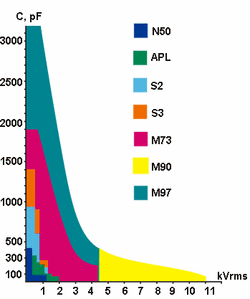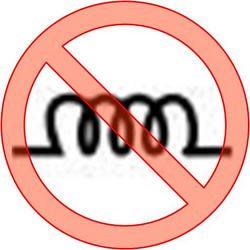 December 19, 2012 Editor: Ward Silver, NØAX | ||||||
IN THIS ISSUE
NEW HF OPERATORS - THINGS TO DO If you've never entered a 160 meter contest, you'll definitely want to determine your grid square and give the Stew Perry contest a try. The contest is scored by distance and power so even the little pistols can do well. And before you step out for New Year's Eve, connect up a straight key and pound a little brass on Straight Key Night or operate in one of the several New Year's Day contests. BULLETINS A heartfelt year-end tip of the Contest Update cap to you and your families as we close out 2012 and start a new calendar. May the year 2013 be a good one for us all! The next edition of the Contest Update (Jan 2) will be somewhat attenuated as your editor takes a bit of a break from wearing the letters off yet another keyboard. BUSTED QSOS Jeff K8ND corrected my call sign error - Joerg, shown operating at PJ2T is DF9LJ, not DL9FJ. Froeliche Weinachten, Joerg! CONTEST SUMMARY Complete information for all contests follows the Conversation section Dec 22-23
Dec 29-30
December 13 marked 100 years of Amateur Radio licensing, which began in 1912. Dave Sumner, K1ZZ, noted in the January 2012 QST editorial "It Seems to Us" that in the four months following the August 13, 1912 passage of the legislation, 1,185 amateur stations were licensed - just a small fraction of the number that were active at the time. We are well over 700,000 in the US now...for a quick tally of the current numbers check out AHØA's web site. The Reverse Beacon Network is good at showing where you can be heard but what about a tool for showing what you can hear from other places? Faros from Afreet Software (a.k.a. - Alex VE3NEA, creator of CW Skimmer and other software) checks reception of the NCDXF beacons from around the world and around the clock and on all the high bands. (Thanks, Chad WE9V)
Array Solutions has announced that both the 2500A (automatic tune) and 2500HF (manual tune) OM Power amplifiers were recently granted approval for sale in the USA by the FCC. (Thanks, Bob W5OV) Does it seem like you are working a lot of dupes? It felt that way to Contest Log Analyzer author, Bob KØRC during the recent ARRL 160 Meter Contest. In response, he added a new worksheet to the analyzer that collects and displays the dupes in a log. "This year I had 978 entries in my log with 22 dupes, or about 2.2%. In 2011 there were 471 QSOs with 2 dupes (0.4%), and in 2010 there were 961 QSOs with 10 dupes (1.0%). So my logs do show the significant increase in dupes." Since there is no penalty for logging a duplicate contact in an electronic log, maybe the "dupe taboo" is being relaxed. If you do work a dupe - be sure to leave it in the log and help new contesters understand they should, too. With the smartphone app becoming nearly ubiquitous, are there any Morse code training programs? Sure! Recommendations include Ham Morse, CWText, and Hot Paw. If anything on a smartphone is cool, then morsing must also be, correct? (Thanks, Julio AK4VL and Tom WB8WOR) There are many Morse training programs such as the ARRL's training CD that uses the Koch method of sending fast characters with lots of spacing or IKØYGJ's Zen and the Art of Radio Telegraphy. Phil WØXI has a CW practice resource page and groups like SKCC, FISTS, and CWops offer lots of information and help! (Thanks, Jay W5JAY and Terry WAØITP) Web Site of the Week - Who says engineers can't have a little fun with themselves? This EDN website collected quite a few of my favorite engineer jokes and a couple that I hadn't heard. Good for a holiday chuckle by you and your friends! WORD TO THE WISE The white noise that you hear on an empty frequency is the transmissions of all the hams who have gone before us. (Relayed by Sean N7OUW) Two sets of photos from 2012 W9DXCC by Ben K9IDQ have been added to the W9DXCC web site Photo Gallery. (Thanks, Randy K9OR) There is a wealth of information in the webinars archived on the Potomac Valley Radio Club and World Wide Radio Operators Foundation websites. Watch for new webinars being announced and added! âSingle-Operator certificates for the 2011 ARRL 10 Meter Contest - all 1,078 of them - have finally been processed. The Multi-op certificates are being processed and will be followed by the 2012 RTTY Roundup certificates and plaques. (Thanks, ARRL Contest Branch Manager, Sean KX9X)
The results for the PreStew event from October are now posted. Many thanks to the 200+ people who sent in their log. (Thanks, Tree N6TR) The CW OPEN results are now online. Al AD6E reports, "Looks like the next CW OPEN will be Sept 7 beginning with the first session at 0000-0359Z. This change of times is aimed to increase participation in both Europe and Asia. As before, all parts of the world will have two "good" sessions during the day/evening and one "bad" session in the middle of the night." OPERATING TIP This week's tips involve ways to be more effective when operating SO2R (Single-Op, Two Radios):
Bill Wortman N6MW has reworked the GAMMA program provided as a supplement to the Antenna Book and that is useful to readers of the ARRL Handbook andLow-Band DXing by ON4UN, as well. The previous version of GAMMA failed to find solutions to the calculations when the when the combination of the desired feed line impedance exceeds the product of the raw antenna resistance and the gamma step-up value. Bill's new code fixes that problem and can be found on the Antenna Book and ARRL Handbook web pages as a compressed "zip" file. The ARRL extends its thanks to N6WM for his contribution, as well as to Greg Ordy W8WWV for making some tests of the code.
A terrific book on batteries, "Batteries in a Portable World" by Cadex CEO Isidor Buchmann, is in stock at the ARRL Store. Buchmann also started the popular Battery University website which has a wealth of information about the use and care of batteries. Crank-up towers often squeak and squall when being lowered or raised and sometimes when flexing from the wind. Spencer K5GAK says he "solved that problem with some bicycle dry Teflon lube from one of the online bike shops. It goes on as a liquid and the solvent evaporates leaving a Teflon coating." Sometimes relay contacts that handle received signals (such as transmit-receive relays) develop thin films of oxide or other material that present a high resistance to low voltage signals. (Higher voltages punch right through the film and clear the resistance.) Tom W8JI has published a contact cleaning procedure that may help you clear up an intermittent receive problem caused by a relay contact. Dennis N6KI noticed this locking power plug that might be useful in securing your station or preventing unauthorized (or unwise) energizing of a piece of gear. VE7BQH's tables of antenna performance for 6 meters, 2 meters, and 70 cm are now updated on the web site of Lance W7GJ. (The link is about halfway down the page.) The tables are now in spreadsheet (Excel) format with the band listings on individual worksheets. Want to make your own radar from "stone knives and bearskins"? The November 2012 IEEE Spectrum article "Coffee-Can Radar" shows how, using a laptop for the computational horsepower. A video describing the project is also available.
The art store is always a fertile place for the imagination and the workbench. A note in The Canadian Amateur by VE3DCU points out that painting panels for artists (a simple wood frame with a paintable hardboard panel) can be used for simple circuits that don't require a shielded enclosure. What has KB9YIG, purveyor of the SoftRock SDR kits been up to? He's still pumping out designs. The time has never been better to try an SDR radio! Night Fire Electronics is a recent entry into the kits and parts scene. Along with a wide selection of electronic products, their component collections and prototyping boards are very useful. This simple and artistic Instructables knife-holder project is adaptable to holding all manner of small tools and can act as a third-hand during assembly and soldering. Who says the workbench can't look good as well as be functional? Technical Web Site of the Week - Does anyone make variable capacitors these days? Yes and right here in Ohio! Oren Elliott Products is the primary supplier of "bread slicer" capacitors in the USA. There are a wide variety of values and voltages available as the graphic above illustrates. They also make variable inductors and planetary reduction drives. (Thanks, Carl KM1H) Prestidigitation On A Winter's Solstice A small quasi-literary offering from the NØAX archives to my many readers at the end of 2012. Keep it magical!
This quiet eve with all asleep Without a station's sign at hand Detecting falls of frozen flake This window onto blackest night A station under sun or star Waves fly beyond to skybound plane Whose fields my silent wires find Miniscule yet well received 19 Dec 2012 through 1 Jan 2013 An expanded, downloadable version of QST's Contest Corral in PDF format is available. Check the sponsor's Web site for information on operating time restrictions and other instructions. HF CONTESTS Lighthouse Christmas Lights QSO Party--Phone,CW,Digital, from Dec 21, 0001Z to Jan 8, 2359Z. Bands (MHz): 1.8-28, 50,144. Exchange: Serial or ARLHS number. Logs due: Jan 31. Rules RAEM Contest--CW, from Dec 23, 0000Z to Dec 23, 1200Z. Bands (MHz): 3.5-28. Exchange: Serial and lat/long in degrees. Logs due: Jan 25. Rules SKCC Straight Key Sprint--CW, from Dec 26, 0000Z to Dec 26, 0200Z. Monthly on the 4th Wednesday UTC. Bands (MHz): 1.8-28, 50. Exchange: RST, S/P/C, name, SKCC nr or power. Logs due: 5 days. Rules DARC XMAS Contest--Phone,CW, from Dec 26, 0830Z to Dec 26, 1059Z. Bands (MHz): 3.5-7. Exchange: RS(T) and DOK or special station code. Logs due: 3 weeks. Rules NAQCC Milliwatt Sprint--CW, from Dec 27, 0130Z to Dec 27, 0330Z. Bands (MHz): 3.5-14. Exchange: RST, S/P/C, and NAQCC mbr nr or power. Logs due: 4 days. Rules Original QRP Contest--CW, from Dec 29, 1500Z to Dec 30, 1500Z. Bands (MHz): 3.5-14. Exchange: RST, serial, and category. Logs due: Jan 31. Rules
RAC Winter Contest--Phone,CW, from Dec 29, 0000Z to Dec 29, 2359Z. Bands (MHz): 1.8-28, 50,144. Exchange: RS(T) and province or serial. Logs due: Jan 31. Rules Stew Perry Top Band Distance Challenge--CW, from Dec 29, 1500Z to Dec 30, 1500Z. Bands (MHz): 1.8. Exchange: 4-char grid square. Logs due: 30 days. Rules New Year's Eve and New Year's Day Contests ARRL Straight Key Night--CW, from Jan 1, 0000Z to Jan 1, 2400Z. Bands (MHz): 3.5-28, 50+. Exchange: General QSO information. Logs due: Jan 31. Rules New Years Snowball Contest--Phone,CW, from Jan 1, 0000Z to Jan 1, 0100Z. Bands (MHz): 3.5. Exchange: RST, serial, AGB number. Logs due: 3 weeks. Rules SARTG New Year RTTY Contest--Digital, from Jan 1, 0800Z to Jan 1, 1100Z. Bands (MHz): 3.5-7. Exchange: RST, serial, Happy New Year in your language. Logs due: Jan 31. Rules AGCW Happy New Year Contest--CW, from Jan 1, 0900Z to Jan 1, 1200Z. Bands (MHz): 3.5-14. Exchange: RST, serial, AGCW number. Logs due: Jan 31. Rules VHF+ CONTESTS Lighthouse Christmas Lights QSO Party--Phone,CW,Digital, from Dec 21, 0001Z to Jan 8, 2359Z. Bands (MHz): 1.8-28, 50,144. Exchange: Serial or ARLHS number. Logs due: Jan 31. Rules SKCC Straight Key Sprint--CW, from Dec 26, 0000Z to Dec 26, 0200Z. Monthly on the 4th Wednesday UTC. Bands (MHz): 1.8-28, 50. Exchange: RST, S/P/C, name, SKCC nr or power. Logs due: 5 days. Rules ARRL Straight Key Night--CW, from Jan 1, 0000Z to Jan 1, 2400Z. Bands (MHz): 3.5-28, 50+. Exchange: General QSO information. Logs due: Jan 31. Rules LOG DUE DATES 19 Dec 2012 through 1 Jan 2013
ARRL Information Click here to advertise in this newsletter, space subject to availability. Your One-Stop Resource for Amateur Radio News and Information ARRL membership includes QST, Amateur Radio's most popular and informative journal, delivered to your mailbox each month. Subscribe to NCJ - the National Contest Journal. Published bimonthly, features articles by top contesters, letters, hints, statistics, scores, NA Sprint and QSO Parties. Subscribe to QEX - A Forum for Communications Experimenters. Published bimonthly, features technical articles, construction projects, columns and other items of interest to radio amateurs and communications professionals. Free of charge to ARRL members: Subscribe to The ARRL Letter (weekly digest of news and information), the ARES E-Letter (monthly public service and emergency communications news), Division and Section news -- and much more! ARRL offers a wide array of products to enhance your enjoyment of Amateur Radio. Visit the site often for new publications, specials and sales. Donate to the fund of your choice -- support programs not funded by member dues! Reprint permission can be obtained by sending email to permission@arrl.org with a description of the material and the reprint publication. ACKNOWLEDGEMENTS ARRL Contest Update wishes to acknowledge information from WA7BNM's Contest Calendar and SM3CER's Contest Calendar. | ||||||











